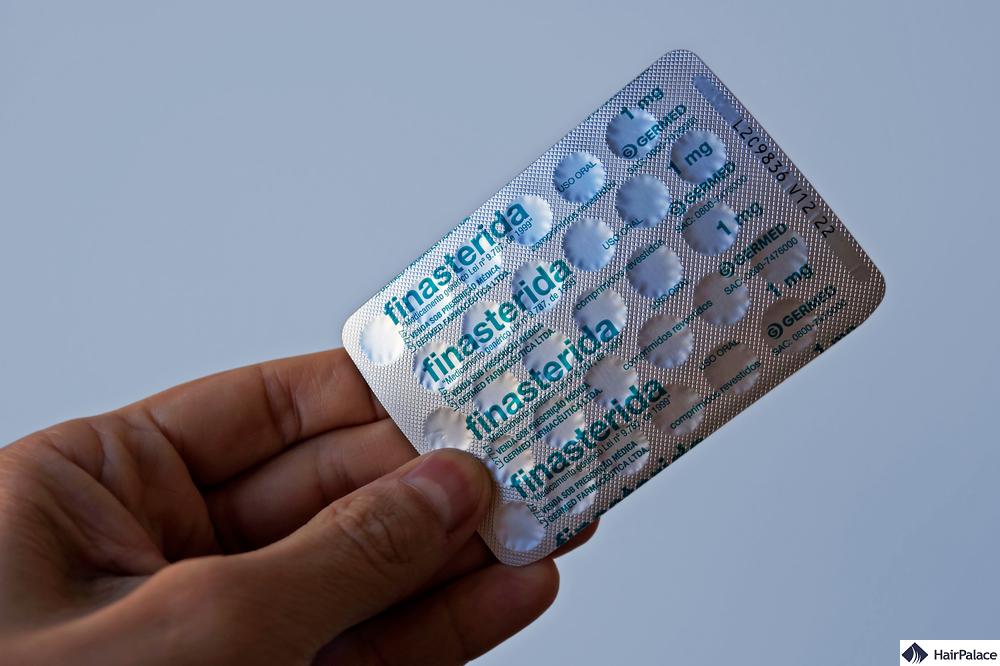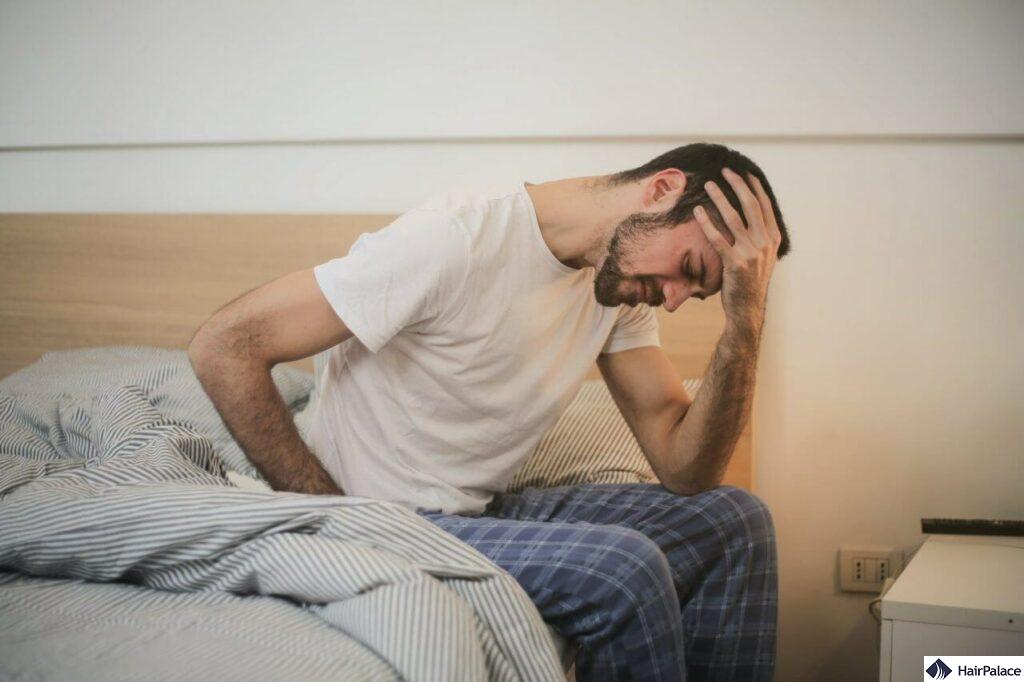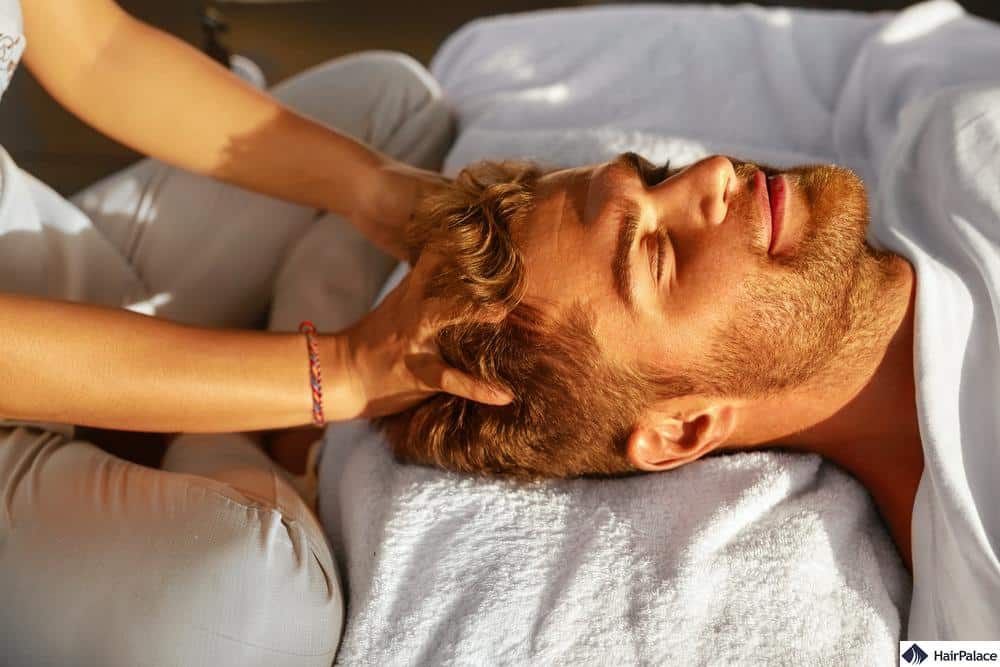Finasteride Side Effects: What They Are and How to Avoid Them

Finasteride side effects are a key concern for many who consider this a popular treatment for male pattern hair loss or an enlarged prostate.
While taking finasteride is effective for slowing hair thinning and promoting regrowth, some users may experience side effects ranging from mild to more persistent symptoms.
In this article, we’ll explore what these side effects are, how common they are, and what steps you can take to reduce the risks and use finasteride tablets safely.
Finasteride side effects (Men)

Finasteride is a commonly prescribed medication for androgenetic alopecia and benign prostatic hyperplasia, but like any drug, it comes with potential side effects, though they don’t affect everyone.
Common finasteride side effects include sexual issues such as decreased ejaculatory volume and libido, and sexual intercourse inability.
The drug affects testosterone levels, which causes these unwanted effects of finasteride tablets, such as erection loss.
These typically occur in a small percentage of users, and for many, they go away either with continued use or after stopping the medication.
Other potential side effects can include breast tenderness or enlargement, skin swelling, unusual drowsiness and mood changes like depression or anxiety.
In very rare cases, what’s known as Post-Finasteride Syndrome (PFS) is a condition where symptoms persist long after stopping the drug.
Topical finasteride, often used as an alternative to oral, appears to have a lower risk of systemic side effects.
Since it’s applied directly to the scalp, it potentially limits absorption into the bloodstream.
It’s important to note that most side effects are reversible and resolve within a few weeks after discontinuation.
However, anyone considering finasteride should consult with a healthcare professional to weigh the benefits against potential risks.
Topical finasteride side effects

Topical finasteride therapy is gaining popularity as a treatment for androgenetic alopecia due to its potential to reduce hair loss while minimising systemic side effects.
Unlike oral finasteride, which is taken in pill form and absorbed throughout the body, topical finasteride is applied directly to the scalp, resulting in lower levels of the hair growth drug in the bloodstream.
As a result, topical finasteride side effects are generally milder and less common than those seen with the oral version.
This makes topical finasteride a preferred option for individuals who are concerned about the side effects associated with oral finasteride but still want an effective solution for hair loss.
However, both types of finasteride can lower prostate-specific antigen (PSA) levels, which is important to consider when interpreting PSA test results during prostate cancer screening.
Finasteride long-term side effects

Long-term use of finasteride, especially in its oral form, has been linked to a range of side effects, most of which are uncommon but worth being aware of.
The most talked-about long-term side effects involve sexual function, testicular pain, decreased libido, erectile dysfunction, and male infertility.
Patients not only report a decreased interest in sex but also a decrease in sexual ability overall.
For most users, these effects are reversible after discontinuing finasteride, but in rare cases, symptoms may persist.
This condition is often referred to as Post-Finasteride Syndrome (PFS), though it’s still a subject of ongoing research and debate within the medical community.
In addition to sexual side effects, liver disease, as well as mood changes, have been reported by a small number of users during long-term use.
There’s also some evidence suggesting a potential link between long-term finasteride use and changes in male breast tissue.
Patients may experience breast tenderness or gynecomastia, and an increased risk of high-grade prostate cancer.
If you’ve been taking finasteride to treat male pattern baldness for a long time and notice any of the above side effects, contact your doctor immediately.
How to reduce side effects of finasteride

The appearance and severity of side effects can depend on the amount of medication you are taking for male pattern hair loss.
Here are some ways to reduce any side effects.
Start with the lowest dose
Taking the lowest dose is one of the most effective ways of reducing side effects. If you still suffer side effects, there are other ways to alleviate symptoms.
Take your course of medicine before bedtime
Taking your medication at night before bed may lessen your experience of side effects during the daytime. You can “sleep” them off. You can also decrease the severity by taking the tablet with food.
Eat a healthier diet
Certain foods may amplify side effects, such as unusual weight gain. Try to reduce fat in your diet, and focus on eating more vitamins and minerals to strengthen your body.
Reduce alcohol
Alcohol may increase dihydrotestosterone (DHT) in your body. DHT is a harmful hormone that shrinks hair follicles to such a degree that they cannot grow hair. DHT can also lessen the effect of certain medications. By reducing it, you’re eliminating this negative influence.
Avoid caffeine
Similar to alcohol, caffeine may increase DHT levels in your body, leading to more thinning and loss and reducing the results from your course of medication.
Avoid extreme temperatures
Extreme heat (both hot and cold) can decrease the benefits of Finasteride. Avoid saunas, sun exposure, and extreme styling techniques such as hair straighteners or curling tongs.
Always follow the proper dosage
Only take the required amount; do not take more. Always follow your regular dosing schedule, and in case of a missed dose, simply skip the medication and continue as normal.
FAQ
Serious side effects may include sexual dysfunction (loss of libido, erectile dysfunction), depression, and in rare cases, persistent post-finasteride syndrome (PFS).
Topical finasteride can have side effects, but they are generally milder and less common than those of oral finasteride.
Side effects occur in a small percentage of users, studies suggest around 1–3% may experience sexual or mood-related issues.
Most side effects subside within days to a few weeks after discontinuation, though some users report longer recovery times.
Side effects can begin within days to weeks after starting treatment, depending on the individual’s sensitivity.
For most users, side effects are temporary and resolve within a few weeks, but in rare cases, they may persist longer.
Most side effects are reversible after stopping the medication, although some individuals report persistent symptoms.
- Kaufman KD et al. Finasteride in the treatment of men with androgenetic alopecia. Journal of the American Academy of Dermatology. 1998;39(4):578-589.https://doi.org/10.1016/S0190-9622(98)70007-6
- Irwig MS. Persistent Sexual Side Effects of Finasteride: Could They Be Permanent? The Journal of Sexual Medicine. 2012;9(11):2927-2932.https://doi.org/10.1111/j.1743-6109.2012.02846.x
- Finasteride — finasteride tablet, coated. (2019).https://dailymed.nlm.nih.gov/dailymed/drugInfo.cfm?setid=ecd2fbb2-a4bd-44f2-831d-179e7dbf0741
- Proscar — finasteride tablet, film coated. (2021).https://dailymed.nlm.nih.gov/dailymed/drugInfo.cfm?setid=7c01f541-1c88-400c-41a9-7cbb9dee50c0
- Propecia — finasteride tablet, film coated. (2021).https://dailymed.nlm.nih.gov/dailymed/drugInfo.cfm?setid=4e07adb4-7807-47d3-b9a9-2332a3047410
- Zito PM, Bistas KG, Syed K. Finasteride.2021.https://www.ncbi.nlm.nih.gov/books/NBK513329/


